mexican palm tree root system
All the roots feed on the soil and expand to find sources of water. Plant fan palm trees 6 to 8 feet apart to prevent the root balls from entangling in the soil.

Root System Of Palm Trees Studiousguy
Because palms tend to have heavy fronds and trunks the numerous roots act both as anchors and feeders to sustain the growing plant -- even trees taller than 50 feet do not use a taproot system.
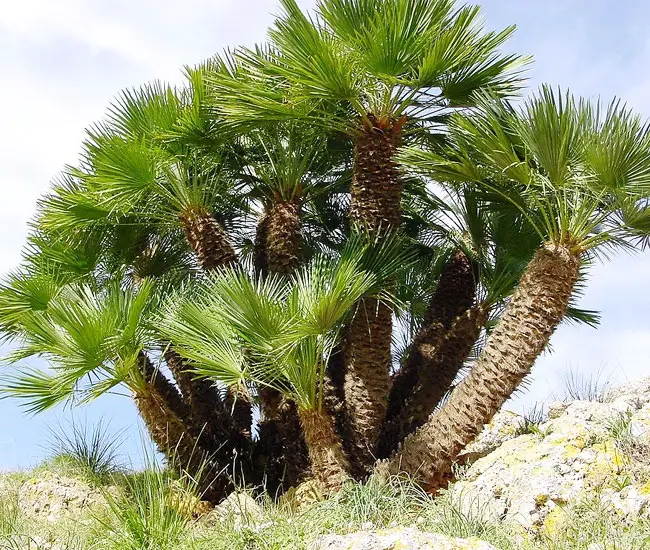
. Flowering is showy with three- to seven-inch. They actually cut through one side of. The bismarkia palm Bismarckia nobilis grows to 70 feet tall and has stiff blue-green fronds that grow in windmill formations around its single trunk.
The sparse see-through foliage of the Mexican palo verde is bright yellow green composed of thorny branchlets and six- to nine-inch-long compound leaves with many tiny leaflets. Two palms in the Brahea genus have low root damage potential. Best wishes with your garden.
The roots grow along with the tree by spreading themselves horizontally across the soil. Caring for Your Palm Once the Mexican fan palm is successfully planted it will need a thorough watering. We identified it from obedient source.
The Mexican Fan Palm Tree has attractive fan-shaped leaves that can span up to five feet in width. Once they reach about 30 feet 9 m in height they often begin to naturally drop their dead leaves meaning its not necessary to prune away. The maximum depth that these roots can penetrate is about 36 inches.
Shallow roots extend into the first four feet of soil with deeper roots near the. Palm trees have fibrous root system. Add a small mound of dirt at the root balls edge to hold water.
We can even see these roots if the tree is planted in shallow soil. Feed in early spring before new growth emerges. Hey when we had our pool spa built in 2003 there were are 3 W.
THe closest is about 4 feet away. They grow horizontally and remain narrow even as the plant grows taller. The Mexican fan palms roots respond well to a moist well-drained environment.
It grows 15 to 20 feet tall and is hardy to USDA hardiness zones 9 through 11 according to AgriLife Extension. They dont penetrate the soil too deeply but spread out from the trees base like a mat. Posted February 11 2011.
Palm tree roots have a preference for sandy soil which makes them easy to uproot. We can even see these roots if the tree is planted in shallow soil. The Mexican Fan Palm Tree scientific name Washingtonia robusta is a very popular indoor and outdoor palm because of its striking appearance and cold hardiness which makes it a great choice for landscape in USDA zones 8b-11.
This is known as a taproot system and the roots that grow out are thinner than the main root. Usually the regular root system has one main big root from which many tiny roots reach out beneath the soil. They are spread over the soil like a mat and penetrate nearly 36 inches of topsoil.
There are relatively few nutritional problems of concern on Mexican fan palms. It prefers sunny sites with acidic soil. Palm tree roots have a preference for sandy soil which makes them easy to uproot.
Mexican fan palms transplant easily and grow well in full sun to partial shade. Palm trees have fibrous root system The roots of the Palm are not deeply rooted in the soil. The roots conduct water and minerals upto the trunk or stem to keep the fronds fresh and green.
Roots of palm trees grow in thin strands from the base of the trees root ball. For preventing the plant from yellowing the roots of the palm trees absorb essential minerals like manganese iron and magnesium. I cant say whether or not the roots will interfere with your septic system - it depends upon how close you plant your palm.
Here are a number of highest rated Palm Tree Roots pictures on internet. Its root system is aggressive shallow and rather pliant which makes the tree very unstable. Remove old foliage periodically.
The best soil to use is one that contains clay or loam and it may be acidic or alkaline. The palm tree root system tends to absorb moisture from the soil and keep the plant hydrated. This tree also has a combination of undesirable root characteristics.
Tolerates periodic drought particularly in coastal regions. The root system of palm trees is fibrous. Water deeply regularly in first growing season to establish root system.
Place the palm in the hole you will likely need someone to help you with this part and shovel the dirt back in tamping it down to remove air pockets. Roots of palm trees grow in thin strands from the base of the trees root ball. The roots of the Palm are not deeply rooted in the soil.
Usually they remain with two feet of the trunk and venture down 3-4 feet. Once established reduce frequency. If the soil is too wet the roots may begin to rot.
Robustas very close to the spa. The fibrous root system grows horizontally instead of vertically to support a tree. These leaflets are shed quickly in drought or cold leaving just the midribs of each leaf persisting on the tree.
Provide average to lean well-drained soil in an area allows ample space for mature height. See Transplanting Palms in the Landscape for more information about transplanting large specimen palms. We consent this nice of Palm Tree Roots graphic could possibly be the most trending subject in the manner of we share it in google pro or facebook.
This is a cold-hardy drought-resistant and inexpensive palm that doesnt require a lot of maintenance. The roots of palm trees can also be easily recognized because they are very distinct. Mexican fan palms transplant easily and grow well in full sun to partial shade.
Otherwise if left uncared for these dead fronds will collect. They can tolerate both slightly alkaline and slightly acidic soil. Mexican fan palms transplant easily as mature specimens with root balls 6 to 12 inches from the trunk being adequate to insure good survival rates.
Roots form a root ball from the origination zone. They grow at a rate of at least 3 feet 1 m per year. They are spread over the soil like a mat and penetrate nearly 36 inches of topsoil.
Palm trees have a fibrous root system with the roots growing shallowly at a depth not exceeding 36 inches deep. Its submitted by admin in the best field. Palm tree roots are fibrous.
Palm Tree Roots. Answer from NGA May 30 2006 0 Palm trees typically have root systems that grow down rather than out. Its common for these roots to be visible above the ground.
The roots stay thin and regularly regenerate. They like full sun to partial shade and well-draining sand to loam type soil. It also has a weak wood structure.

Date Palm Better Homes Gardens
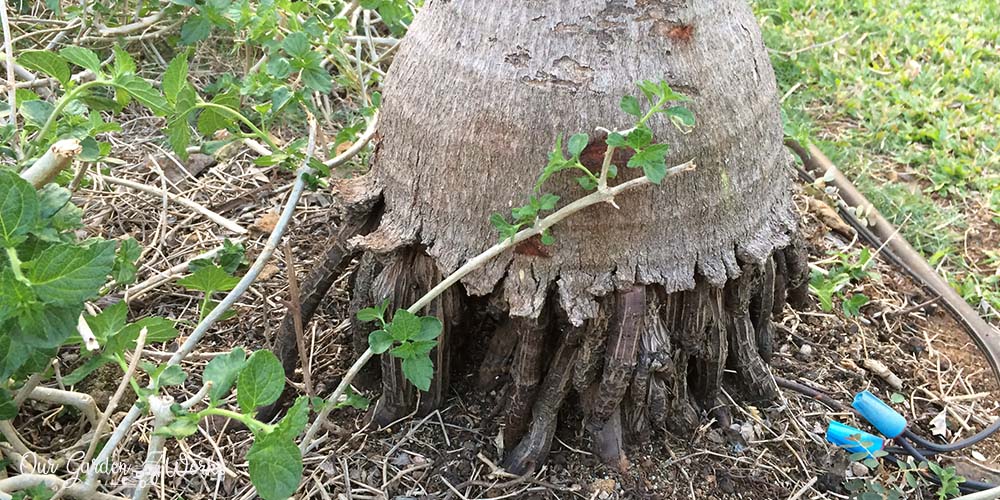
Palm Tree Stump Removal A How To Guide
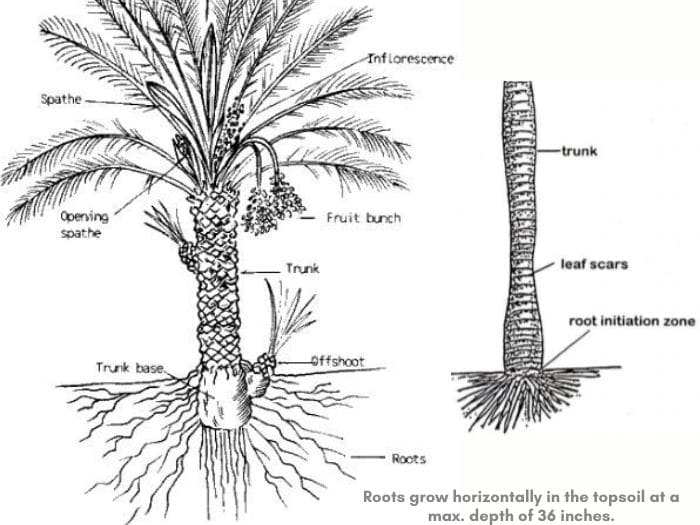
Palm Tree Roots How Deep Do They Grow Facts Gardenine

Amazon Com Mexican Fan Palm Tree Seedlings 2 Years Old 4 6 Starting To Fan Out Tree Plants Patio Lawn Garden

Top 35 Types Of Palm Trees With Pictures

How Long Does It Take For Palm Trees To Grow Gardening Dream
Windmill Palm Tree For Sale Online Perfect Plants

Root System Of Palm Trees Studiousguy
What Do Palm Tree Roots Look Like Quora
What Do Palm Tree Roots Look Like Quora
Can A Palm Tree Be Planted Next To The Pond Terrace Swimming Pool La Palmeraie Gb
:max_bytes(150000):strip_icc()/european-fan-palm-plant-profile-4845721-03-59ca97c20f9e4c4e94d57fae31017217.jpg)
European Fan Palm Plant Care Growing Guide

Root System Of Palm Trees Studiousguy
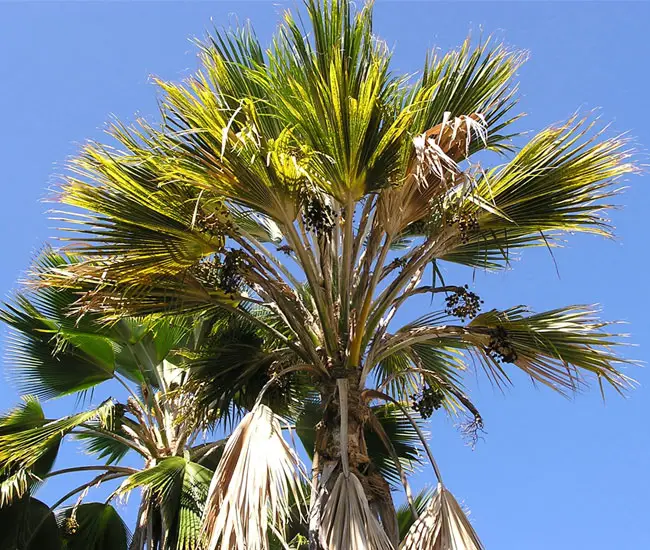
10 Reasons Why Palm Leaves Are Turning Brown Or Yellow

Palm Trees Of The Southwest Guzman S Garden Centers

How Deep Palm Tree Roots Grow Potential Damages Fixes
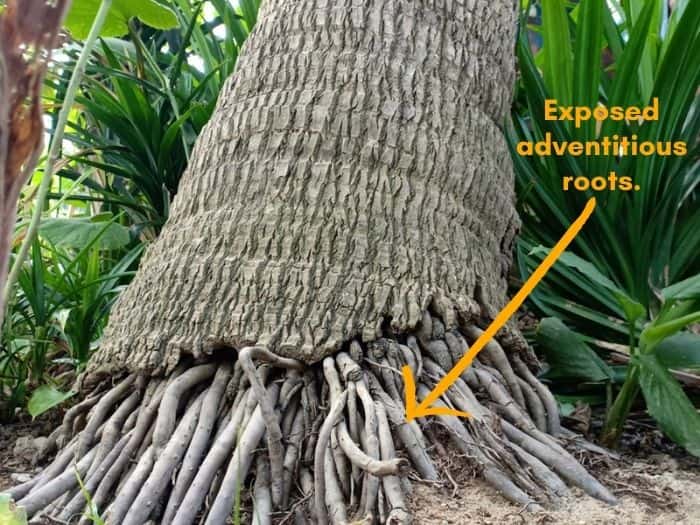
Palm Tree Roots How Deep Do They Grow Facts Gardenine
